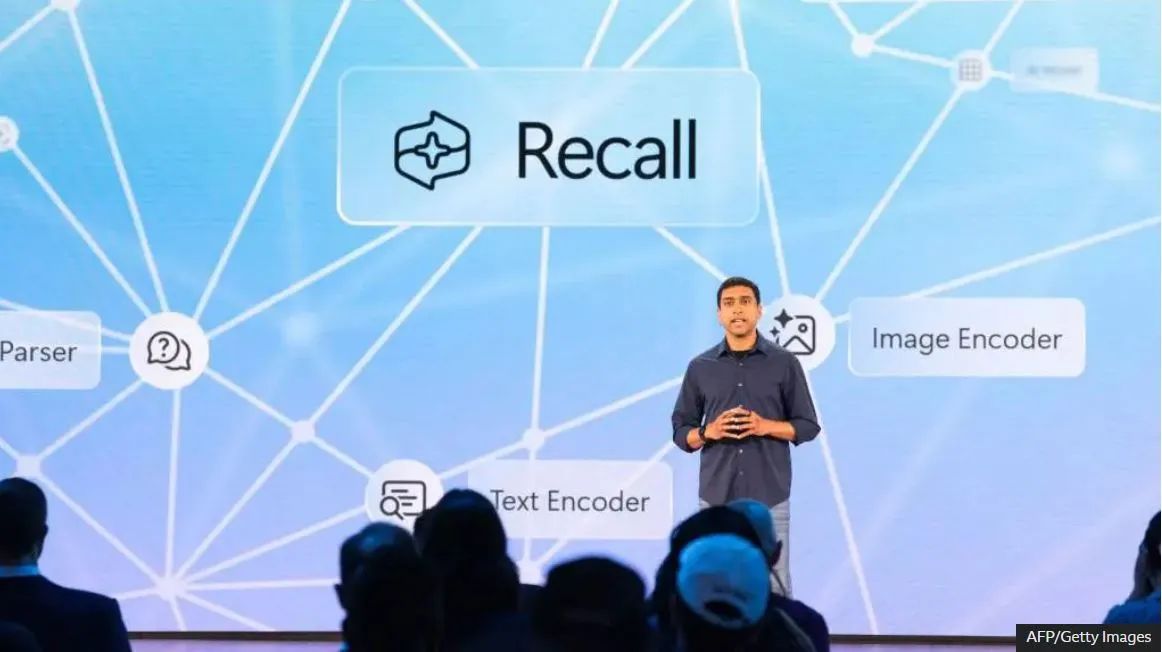In May 2024, Microsoft introduced a new feature called “Recall.” It promised to revolutionize how users access and recall data on their PCs. At first glance, the idea seemed like a technological breakthrough. Recall used artificial intelligence (AI) to take regular screenshots of users’ desktops. This allowed them to search through their past activity, including files, emails, and even browsing history. Microsoft described it as a tool that would give users “photographic memory” of their digital lives.
However, this innovation quickly sparked controversy. Critics dubbed it a “privacy nightmare” due to the vast amount of sensitive data it would collect. The backlash was immediate, with concerns raised by security experts, privacy advocates, and even government agencies. The outcry forced Microsoft to delay the feature’s rollout, initially set for June 2024.
Rebuilding Trust in Recall
Fast forward to the fall of 2024, and Microsoft is preparing to relaunch Recall. This time, the company promises that it has learned from the feedback and made significant changes to the tool. Recall will now be available exclusively on the new CoPilot+ range of laptops, which are powered by advanced AI chips.
One of the most notable changes is that Recall is no longer turned on by default. Instead, users must actively opt into the feature. This change addresses a major concern raised during the initial unveiling. Many feared that having the feature enabled automatically would violate user privacy without proper consent.
Pavan Davuluri, Microsoft’s corporate vice president of Windows and devices, reassured users about privacy. It is now at the forefront of Recall’s design. “Recall is an opt-in experience,” Davuluri stated. “Snapshots and any associated information are always encrypted, and Windows offers tools to help users control their privacy.”
Encryption is a key part of Recall’s overhaul. The tool now stores all snapshots in an encrypted format, with access tied to Windows Hello, Microsoft’s biometric security system. Users must authenticate with their face, fingerprint, or PIN to view any of their stored screenshots. Sensitive information, such as passwords or credit card numbers, will be excluded from screenshots by default.
Concerns from the Privacy Community
Despite these improvements, many privacy advocates remain cautious. When Recall was first announced, the Information Commissioner’s Office (ICO) launched an inquiry into the tool. The ICO is the United Kingdom’s data watchdog. The ICO has since acknowledged that Microsoft has made several changes to address privacy concerns. It stated it will continue to assess the tool as it moves toward launch.
One of the ICO’s initial concerns was the lack of encryption in Recall’s database. Early versions of the tool stored screenshots in plain text, making them potentially accessible to malware. Microsoft has overhauled the security architecture. All data stored by Recall is now encrypted. It is also protected by Trusted Platform Module (TPM) technology, a requirement for Windows 11.
David Weston, Microsoft’s vice president of enterprise and OS security, explained that the company has taken extensive measures to secure Recall. The company has made significant efforts. “We’ve moved all of the screenshot processing, all of the sensitive processes, into a virtualization-based security enclave,” said Weston. This means that even if malware were to gain access to a user’s system, breaching Recall’s database would be extremely difficult. It would face an immense challenge. Even if malware were to gain access to a user’s system, breaching Recall’s database would be extremely difficult.
A New Era of Digital Memory?
Microsoft’s vision for Recall is ambitious. The company believes the tool could transform how users interact with their computers. It could make it easier than ever to find files, emails, or websites they’ve previously accessed. In theory, Recall could streamline workflows and help users stay organized by reducing the time spent searching for past information.
However, the feature’s potential comes with significant trade-offs. The idea of a system constantly capturing and storing screenshots has raised questions. How much personal data should be collected and stored by third-party companies? Critics argue that even with encryption and biometric safeguards, the sheer volume of data collected by Recall could be a target for hackers. They also argue that this volume of data could be a target for malicious actors.
The ability to delete specific time ranges is a welcome addition. The capability to block certain apps is also appreciated. Additionally, filtering out sensitive information like passwords and health data is a significant improvement. Still, some experts remain skeptical. Alan Woodward, a cybersecurity professor at Surrey University, has praised Microsoft’s improvements but remains cautious. “Before any functionality like Recall is deployed, the security and privacy aspects will need to be comprehensively tested,” he said. Woodward noted that while the tool has great potential. He would wait until it had been “tested in the wild” before opting in.
Final Thoughts
As Microsoft gears up to launch Recall in November 2024, the tech community remains divided. On one hand, the tool could prove to be a groundbreaking feature, enhancing productivity and memory for users. On the other, it raises important questions about how much of our digital lives should be captured and stored.
Microsoft’s commitment to making Recall opt-in and enhancing its security measures is a step in the right direction. However, the true test will come when users finally get their hands on the tool. Only time will tell. Recall could become a privacy gamechanger. Alternatively, it might be remembered as a cautionary tale in the ongoing battle between convenience and privacy.


Leave a Reply